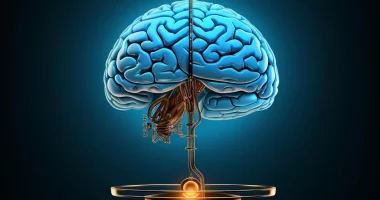Cachexia leads to severe muscle wasting and weight loss. It is a sign of different chronic conditions like multiple sclerosis, cancer, HIV, and chronic kidney failure.
Cachexia mainly affects people in the later stages of severe diseases such as cancer, HIV/AIDS, and heart failure.
The Sarcopenia, Cachexia and Wasting Disorders Society define cachexia as “a complex syndrome marked by continuous loss of muscle mass that can’t be fully back by regular nutritional support and causes increasing functional decline.”
This condition causes unintended muscle wasting, weight loss, and often reduced body fat. Losing skeletal muscle can result in physical weakness and dysfunction.
It is estimated that more than 160,000 individuals are hospitalized with this condition each year in the USA.
Causes
This is a complicated syndrome with causes that may vary depending on an individual’s physiology and the specific illness they have. However, some basic factors are consistent across various diagnoses. These factors include energy expenditure and an increased metabolic rate, which means the body is using up more energy than usual. There is also a decreased intake or availability of nutrients, leading to less fuel for the body to function properly. Additionally, cachexia involves an improved breakdown of muscle tissue and muscle growth prevention, which together contribute to the severe weight loss and muscle wasting characteristic of this syndrome.
Risk Factors
This condition frequently happens in the late stages of serious conditions. Individuals with certain illnesses should consult their healthcare provider about preventive measures and management strategies for cachexia. These conditions include chronic obstructive pulmonary disease, chronic renal failure, cancer, cystic fibrosis, congestive heart failure, Crohn’s disease, HIV, and rheumatoid arthritis. By discussing these risks with their healthcare provider, patients can take proactive steps to prevent or manage cachexia if it develops.
Symptoms
The symptoms include involuntary weight loss, muscle wasting, loss of appetite or anorexia, reduced functional ability, and swelling or edema.
Involuntary weight loss occurs even when a person consumes sufficient nutrition or a high calorie. Muscle wasting is a hallmark symptom, but not all individuals with cachexia are shown malnourished. For instance, someone who was overweight before getting cachexia might seem to have a normal body size despite significant weight loss. Anorexia or Loss of appetite is also common, leading to a reduced desire to eat. Decreased functional ability manifests as symptoms of fatigue, malaise, and low energy levels, including generalized discomfort, a lack of motivation, or extreme tiredness. Edema or swelling can occur due to low proteins in the blood, causing fluid to carry into the tissues.
Because cachexia can be difficult to identify, healthcare providers use various bases for diagnosis. One common method for diagnosing cachexia requires meeting two criteria: unintentionally losing more than 5 percent of body weight within 6 to 12 months, and having a body mass index of less than 20 for those under age 65, or less than 22 for those over age 65.
Complications
The muscle and fat wasting in cachexia is severe and can significantly increase disease. Cachexia is an important factor in about one-fifth of cancer-related deaths.
The complications involve a decreased loss of the ability and quality of life to live independently. It also leads to an impaired response to treatments, decreased immunity, and worsening symptoms of the basic chronic condition. Additionally, cachexia can decrease life expectancy related to the basic disease
Treatment
Treating cachexia often depends on the underlying condition causing it. Since numerous factors contribute to cachexia, a comprehensive medical plan that incorporates several kinds of therapy is typically required. Simply increasing calorie intake is usually not enough to prevent muscle degradation and weight loss due to the complex nature of the syndrome.
Studies from 2019 reviewed that medical professionals should give more attention to psychological and behavioral factors when assessing and treating cachexia.
Some suggested points to help an individual with cachexia include focusing on the social aspects of eating, such as enjoying meals together even if the person isn’t hungry. This can help improve their emotional and psychological relationship with eating. Eating frequent small meals can be more tolerable for individuals with cachexia, and nutritional supplement drinks can assist increase calorie intake between meals. Providing emotional support is important; families should understand that as the disease progresses, the person may lose the desire to eat. Forcing food on them is not helpful, as weight loss and muscle wasting will continue regardless of food intake.
Appetite stimulants, like megestrol, dronabinol, and glucocorticoids, can help increase appetite in particular conditions, allowing the person to participate in social meals and feel less isolated, which can benefit mental health. Encouraging light exercise, as long as it is tolerable, might assist in accumulating muscle mass. However, there is no proof that exercise alone is effective.
Prevention
This syndrome is often a side effect of a fundamental medical condition, so preventing cachexia involves managing and preventing these chronic conditions when possible.
A few conditions that can lead to cachexia, like chronic obstructive pulmonary disease or HIV, can sometimes be prevented with lifestyle choices and medical care. For instance, not smoking and protecting yourself from HIV infection can lower your risk of these diseases. However, other conditions that cause cachexia, like rheumatoid arthritis, cancer, and Crohn’s disease, are usually unavoidable.
Leading an active lifestyle and maintaining a nutritious diet can help decrease the chance of developing chronic conditions that might lead to cachexia. Regular exercise and a healthy diet can support overall health and may prevent or delay the onset of some chronic diseases. While not all causes of cachexia can be prevented, taking care of your general health can improve your chances of avoiding conditions that might lead to this syndrome.
Summary
Cachexia causes severe muscle wasting and weight loss, often seen in late-stage chronic illnesses like cancer and HIV. Its causes include increased metabolism and reduced nutrient intake. Complications include diminished quality of life and impaired treatment response. Preventing cachexia involves managing underlying conditions and maintaining a healthy lifestyle. Treatment requires a multifaceted approach, addressing both physical and psychological aspects, with a focus on small, frequent meals, emotional support, and appetite stimulants. Exercise, when tolerated, can also help build muscle mass.









